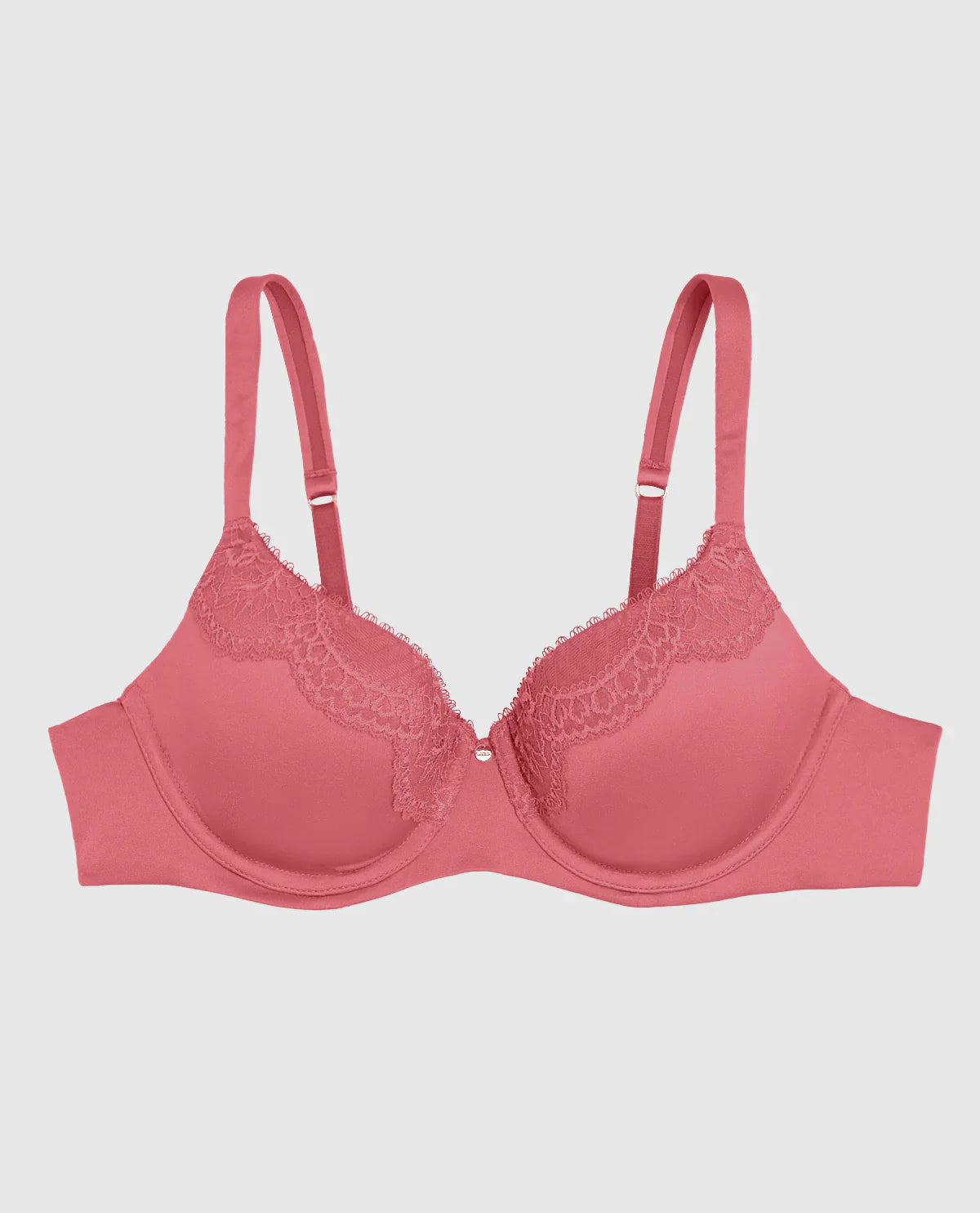Understanding How Much Does a Breast Weigh?

How much does a breast weigh? The weight of a breast can vary greatly, typically ranging from a few ounces to several pounds, depending on various factors like cup size and composition. In this article, we’ll explore what contributes to breast weight, how to estimate it, and the potential impact of heavy breasts on the body. Breast weight varies based on factors like hormonal changes, breast density, and body mass index, leading to different weights for women with the same bra size. The average weight of breasts increases with cup size, with significant variations, highlighting why individual experiences can differ even with similar sizes. Managing heavy breasts can be achieved with supportive bras, potential breast reduction surgery, and understanding the impact of hormones and lifestyle on breast health.
What Factors Influence Breast Weight?
Breast weight is influenced by a myriad of factors, with hormones playing a pivotal role. Hormonal changes throughout a woman’s life, such as during the menstrual cycle, pregnancy, and menopause, can cause significant variations in breast weight. Estrogen and progesterone levels directly contribute to changes in breast tissue, with higher levels often leading to increased breast size. As women age, the decline in estrogen during menopause can lead to a loss of elasticity and sagging in breast tissue, further affecting breast weight.
Breast density is another crucial factor. It is determined by the ratio of glandular tissue and fibrous tissue to fatty tissue within the breasts. Women with denser breasts, having more glandular tissue and fibrous tissue, generally experience heavier breasts. Body Mass Index (BMI) also plays a role, as it influences the composition and density of breast tissue. A higher BMI can lead to a greater proportion of fatty tissue, affecting overall breast weight and tissue density.
Interestingly, natural breast tissue is generally less dense than silicone implants, which can impact the perceived weight even if the volume remains the same. Breast development begins in the uterus, governed by hormonal influences that lead to fat accumulation in breast tissue. This early development sets the stage for how breasts will grow and change throughout life.
These key factors explain why breasts weigh differently and why two women with the same bra size might have a different weight in breast weights.
Average Weight by Cup Size

A visual representation of average breast weight by cup size, illustrating various cup sizes and their corresponding weights.
The average weight of breasts varies significantly by cup size. For instance:
-
Each breast in an A cup size typically weighs around 0.5 pounds.
-
Each breast in a 34A cup size weighs about 0.6 pounds.
-
Breasts in a 42C cup size may weigh around 2.0 pounds each.
-
Breasts in a 40D cup size can average approximately 1.2 pounds each. Boobs weigh differently depending on the cup size.
F cup sizes can range from 1.7 to 2.0 pounds per breast, highlighting the significant variation in breast weight by cup size. On average, the total weight range for breasts is estimated to be between several pounds and 2 pounds. This range indicates that breast weight can vary even among women with the same cup size, due to differences in breast density and tissue composition.
It’s also important to note that one breasts can weigh differently depending on the individual, impacting overall breast weight. This variability is why two women with the same cup size might experience different weights and why understanding your unique breast composition is essential.
Measuring Your Own Breast Weight
Measuring your own breast weight can be a fascinating yet straightforward process. Start by weighing an empty tray on a kitchen scale to establish a baseline for measuring the displaced water. This step ensures that you can accurately account for the weight of the tray itself.
Next, follow these steps:
-
Fill a large bowl with water completely to the brim before submerging your breast.
-
Ensure the entire breast is fully submerged to prevent excess water displacement.
-
Remove your breast from the water and weigh the displaced water.
-
Subtract the tray’s weight from this measurement to find the water’s weight.
-
Multiply the weight of the displaced water by 0.9 to approximate your breast weight.
Remember to repeat the entire process for the other breast, as most individuals have slight variations in breast size and weight. This method provides an estimated weight of your breasts, helping you understand their contribution to your overall body weight.
Impact of Heavy Breasts on the Body
Heavy breasts can significantly impact the body, particularly the upper body and chest. Women with larger breasts often experience a shift in their center of gravity, which can exacerbate spinal posture issues. This shift can lead to an increased thoracic kyphotic angle, indicating a more pronounced curvature of the upper spine.
This increased weight can strain back muscles and ligaments, leading to poor posture and chronic pain. Women with D cup or larger breasts are particularly prone to experiencing back pain. This discomfort is often associated with the weight of their breasts. The upper spine, which anchors the rib cage, and the muscles and ligaments supporting posture become strained due to the weight of large breasts.
Beyond the spine, heavy breasts are associated with increased risks of shoulder and neck discomfort, particularly in women with larger cup sizes. This discomfort can lead to compensatory changes in both the cervical and lumbar spine, further affecting overall body posture and health. Understanding these impacts highlights the importance of managing breast weight effectively to maintain a healthy posture and reduce discomfort.
Solutions for Managing Heavy Breasts
Managing heavy breasts effectively often begins with wearing a supportive sports bra. A well-fitted bra can greatly affect overall comfort and reduce the strain on your shoulders and back. Unfortunately, finding the right bra size can be challenging, as many women unknowingly wear incorrect sizes that do not accommodate changes in breast shape or size over time.
Wide, cushioned straps are particularly beneficial as they help distribute breast weight and reduce shoulder strain, enhancing comfort throughout the day. For some women, breast reduction surgery may be considered to alleviate chronic back pain related to excessive breast weight. This surgery can provide significant relief and improve quality of life for those struggling with the physical burden of large breasts.
Incorporating these solutions into your daily routine can make a substantial difference in managing the weight of heavy breasts and improving overall comfort.
The Role of Bra Fit in Comfort
Wearing the correct bra size is crucial for preventing discomfort and promoting better posture. An improper fit can lead to issues such as poor posture, skin irritation, and breast pain. A well-fitting, supportive sports bra not only alleviates discomfort but also boosts confidence.
Recommended features for bras that support heavy breasts include:
-
Wider bands
-
Adjustable hooks
-
Wider straps
-
Side support panels
-
Breathable fabric
These features help distribute weight evenly and pull carry reduce pressure points, providing adequate support for most people throughout the day. In short answer, this design is supported to enhance comfort and tend to enhance overall well-being.
Women recovering from surgery should consider the following when choosing bras:
-
Opt for non-underwire bras to avoid irritating healing tissues.
-
Use compression bras to provide even support and help manage swelling post-surgery.
-
Choose recovery bras with front closures to make wearing them easier.
-
Select bras that allow adjustability, as swelling can fluctuate during recovery.
How Hormones Affect Breast Weight
Hormones, particularly estrogen, play a significant role in determining breast size and weight. They affect breast development during life stages such as puberty, pregnancy, and menopause. Increased breast density due to hormonal changes can lead to an increase in overall breast weight, impacting how breasts may feel and be perceived.
Understanding the influence of hormone levels on breast size and weight is essential for women navigating these life stages. For instance, hormone replacement therapy can affect breast density, making breasts denser and potentially heavier. Being aware of these hormonal impacts helps women make informed decisions about their health and well-being.
Silicone Implants and Their Weight
An illustration showing silicone implants and their weight compared to natural breast tissue, including how much does a breast weigh. Silicone implants are designed to enhance breast volume and can significantly contribute to overall breast weight. Here are some weight comparisons:
-
Silicone implants weigh approximately 0.23 pounds per 100cc.
-
Saline implants weigh about 0.21 pounds per 100cc.
-
For example, a pair of 300cc silicone implants would add roughly 1.38 pounds to a person’s weight.
These implants can make a noticeable difference in breast weight and extra weight, which is essential to consider for anyone thinking about breast augmentation. Understanding the weight implications of implants helps in making informed decisions about cosmetic surgery.
Maintaining Breast Health
Maintaining breast health is crucial for overall well-being. Regular self-examinations of the breasts can help in identifying any unusual changes or abnormalities, and it’s advisable to perform these checks monthly. Knowing your family history regarding breast cancer is also essential, as genetic factors can increase your risk and may require additional vigilance.
Lifestyle choices significantly impact breast health. For example, smoking has been linked to a higher risk of breast cancer, with women who smoke having a significantly increased likelihood of developing the disease. Adequate folate intake is important for DNA repair, which may help lower cancer risk, and can be found in various foods like spinach and fortified cereals.
Incorporating these practices and being mindful of your health can make a significant difference in maintaining breast health and reducing the risk of chronic pain and other issues through physical activity.
Summary
Understanding breast weight involves a complex interplay of factors, from hormonal changes to the role of bra fit in comfort. By measuring your own breast weight, recognizing the physical impacts of heavy breasts, and implementing solutions like wearing supportive bras, you can manage and maintain breast health effectively. Remember, staying informed and proactive about your breast health can lead to a more comfortable and confident life.
Frequently Asked Questions
How much does an average breast weigh?
On average, a breast weighs between 1 to 2 pounds, though this can vary based on factors like cup size and density. So, it's really about individual differences!
What factors influence breast weight?
Breast weight is primarily influenced by hormonal changes, breast density, BMI, and the composition of natural breast tissue. These factors all play a significant role in determining how much your breasts weigh.
How can I measure my own breast weight?
You can measure your breast weight using the water displacement method; simply weigh the water that your breasts displace and then multiply that weight by 0.9 for an accurate result. It's a simple trick to get a better understanding of your body!
How can heavy breasts impact my body?
Heavy breasts can lead to poor posture, back pain, and discomfort in your shoulders and neck from the added weight. It's important to pay attention to how this discomfort affects your daily activities.
What are some solutions for managing heavy breasts?
To manage heavy breasts, try wearing a supportive bra with wide straps and ensure it fits well; if pain persists, consider discussing breast reduction surgery with your doctor. These steps can really help improve your comfort and quality of life.


